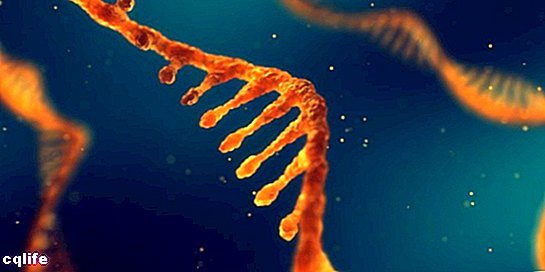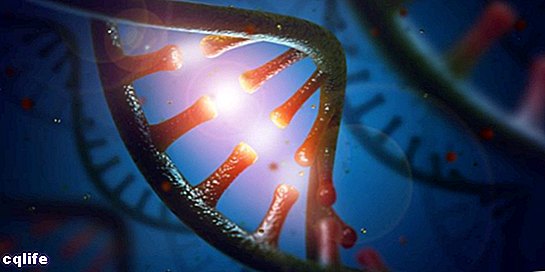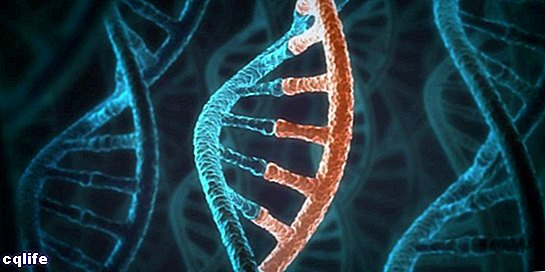We explain what RNA is, what its structure is like and the different functions it performs. Also, its classification and differences with DNA.

What is RNA?
RNA (Ribonucleic Acid) is one of the nucleic acids elementals for life, in charge, together with DNA (deoxyribonucleic acid), of the synthesis of protein and genetic inheritance.
This acid is present inside cells both prokaryotes What eukaryotes, and even as unique genetic material certain types of viruses (RNA viruses). It consists of a molecule in the form of a single chain of nucleotides (ribonucleotides) formed, in turn, by a sugar (ribose), a phosphate and one of the four nitrogenous bases that make up the genetic code: adenine, guanine, cytosine or uracil.
It is generally a linear, single-stranded (single-chain) molecule, and fulfills a variety of functions within the cell, which makes it a versatile executor of the information contained in DNA.
RNA was discovered alongside DNA in 1867, by Friedrich Miescher, who called them nuclein and isolated them from cell nucleus, although its existence was later verified also in prokaryotic cells, no core. The mode of synthesis of RNA in the cell was later discovered by the Spanish Severo Ochoa Albornoz, winner of the Nobel Prize in Medicine in 1959.
Understand how RNA operates and what is its importance for life and evolution allowed the emergence of various thesis on the origin of life, such as the one that intuits that the molecules of this nucleic acid were the first forms of life to exist (in the Hypothesis of the RNA world).
RNA structure

Both DNA and RNA are made up of a chain of units known as monomers, which are repeated and are called nucleotides. Nucleotides are linked together by negatively charged phosphodiester bonds. Each of these nucleotides is made up of:
- A pentose (5-carbon sugar) sugar molecule called ribose (other than deoxyribose in DNA).
- A phosphate group (salts or esters of phosphoric acid).
- A nitrogenous base: adenine, guanine, cytosine or uracil (in the latter it differs from DNA, which has Thymine instead of Uracil).
These components are organized based on three structural levels:
- Primary level. It consists of the linear sequence of nucleotides that define the following structures.
- Secundary level. RNA folds back on itself due to intramolecular base pairing. Secondary structure is the shape it takes during folding: helix, loop, hairpin loop, multi-loop, inner loop, bulge, pseudo-knot, etc.
- Tertiary level. Although RNA does not form a double helix like DNA in its structure, it does tend to form a single helix as a tertiary structure, as its atoms they interact with the surrounding space.
RNA function
RNA fulfills many functions. The most important is protein synthesis, in which it copies the genetic order contained in DNA to use it as a standard in the manufacture of proteins and enzymes and various substances necessary for the cell and the organism. To do this, it uses ribosomes, which operate as a kind of molecular protein factory, and it does so by following the pattern printed by DNA.
RNA types
There are several types of RNA, depending on their primary function:
- Messenger or coding RNA (mRNA). It is responsible for copying and carrying the exact amino acid sequence of DNA to the ribosomes, where instructions are followed and protein synthesis proceeds.
- Transfer RNA (tRNA). Is about polymers short of 80 nucleotides, which have the mission of transferring amino acids to ribosomes, which will act as assembly machines, ordering the correct amino acids along the messenger RNA (mRNA) molecule based on the genetic code.
- Ribosomal RNA (rRNA). They are found in the ribosomes of the cell, where they are combined with other proteins. They operate as catalytic components to "weld" the peptide bonds between the amino acids of the new protein that is being synthesized. Thus, they act as ribozymes.
- Regulatory RNAs. They are complementary pieces of RNA located in specific regions of mRNA or DNA, and that can perform various tasks: interfere with replication to suppress specific genes (RNAi), inhibit transcription (antisense RNA), or regulate gene expression (cRNA long).
- Catalyst RNA. They are pieces of RNA that operate as biocatalysts on the synthesis processes themselves to make them more efficient. In addition, they ensure the correct development of these processes.
- Mitochondrial RNA. Since the mitochondria Cells have their own protein synthesis system, they also have their own forms of DNA and RNA.
RNA and DNA

The difference between RNA and DNA is based, first of all, on their constitution: RNA has a nitrogenous base (uracil) other than thymine and is composed of a different sugar than deoxyribose (ribose).
In addition, DNA has a double helix in its structure, that is, it is a more complex and stable molecule. RNA is a simpler, smaller molecule that has a much shorter life span in our cells.
DNA serves as an information bank: it is an ordered pattern of the elemental sequence that allows us to build the proteins in our body. The RNA is its reader, transcriber and executor: the one in charge of reading the code, interpreting it and materializing it.
